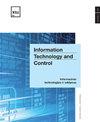Jumping Action Recognition for Figure Skating Video in IoT Using Improved Deep Reinforcement Learning
IF 2
4区 计算机科学
Q3 AUTOMATION & CONTROL SYSTEMS
引用次数: 0
Abstract
Figure skating video jumping action is a complex combination action, which is difficult to recognize, and the recognition of jumping action can correct athletes’ technical errors, which is of great significance to improve athletes’ performance. Due to the recognition effect of figure skating video jumping action recognition algorithm is poor, we propose a figure skating video jumping action recognition algorithm using improved deep reinforcement learning in Internet of things (IoT). First, IoT technology is used to collect the figure skating video, the figure skating video target is detected, the human bone point features through the feature extraction network is obtained, and centralized processing is performed to complete the optimization of the extraction results. Second, the shallow STGCN network is improved to the DSTG dense connection network structure, based on which an improved deep reinforcement learning action recognition model is constructed, and the actionrecognition results are output through the deep network structure. Finally, a confidence fusion scheme is established to determine the final jumping action recognition result through the confidence is established. The results show that this paper effectively improves the accuracy of figure skating video jumping action recognition results, and the recognition quality is higher. It can be widely used in the field of figure skating action recognition, to improve the training effect of athletes.基于改进深度强化学习的物联网花样滑冰视频跳跃动作识别
花样滑冰视频跳跃动作是一个复杂的组合动作,很难识别,对跳跃动作的识别可以纠正运动员的技术失误,对提高运动员的成绩具有重要意义。针对花样滑冰视频跳跃动作识别算法识别效果较差的问题,我们提出了一种基于改进的物联网(IoT)中深度强化学习的花样滑冰视频跳跃动作识别算法。首先,利用IoT技术采集花样滑冰视频,对花样滑冰视频目标进行检测,通过特征提取网络获得人骨点特征,并进行集中处理,完成提取结果的优化。其次,将浅层STGCN网络改进为DSTG密集连接网络结构,在此基础上构建改进的深度强化学习动作识别模型,并通过深度网络结构输出动作识别结果。最后,建立置信度融合方案,通过置信度确定最终的跳跃动作识别结果。结果表明,本文有效提高了花样滑冰视频跳跃动作识别结果的准确性,识别质量较高。它可以广泛应用于花样滑冰动作识别领域,提高运动员的训练效果。
本文章由计算机程序翻译,如有差异,请以英文原文为准。
求助全文
约1分钟内获得全文
求助全文
来源期刊

Information Technology and Control
工程技术-计算机:人工智能
CiteScore
2.70
自引率
9.10%
发文量
36
审稿时长
12 months
期刊介绍:
Periodical journal covers a wide field of computer science and control systems related problems including:
-Software and hardware engineering;
-Management systems engineering;
-Information systems and databases;
-Embedded systems;
-Physical systems modelling and application;
-Computer networks and cloud computing;
-Data visualization;
-Human-computer interface;
-Computer graphics, visual analytics, and multimedia systems.
 求助内容:
求助内容: 应助结果提醒方式:
应助结果提醒方式:


